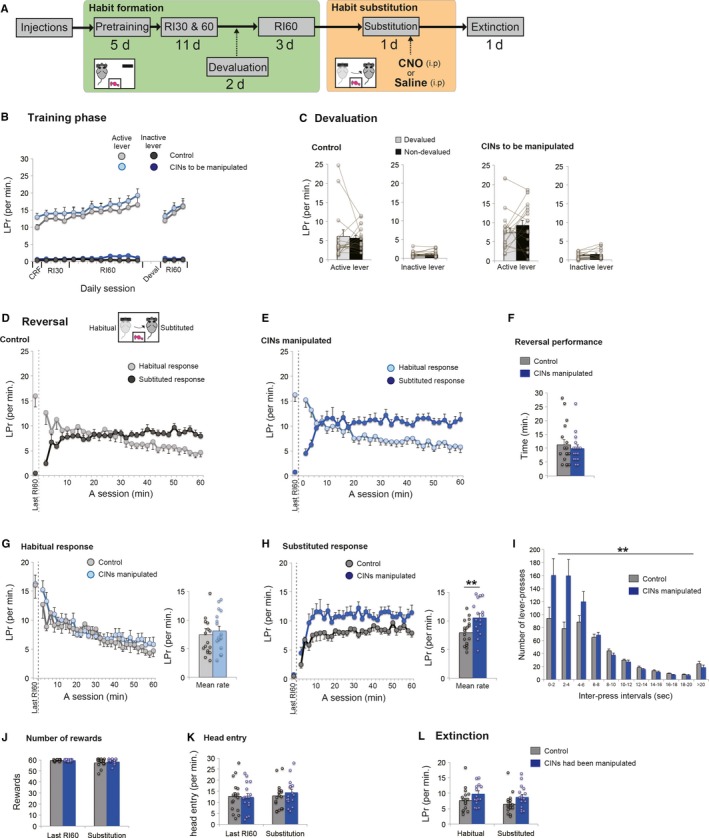Figure 2.

Chemogenetic activation of CINs in a habit substitution task. (A) A flow chart of experiment 1. Animals formed a habitual response under RI30 and RI60 (habit formation period). Next, a habit substitution task was commenced, during which CINs were manipulated. (B) Lever‐press rate (LPr) during habit formation. (C) Lever‐press rate during a 5‐min extinction test under the outcome devaluation procedure. Note that both groups showed insensitivity to the outcome devaluation, indicating that a habit has been formed successfully. (D and E) Lever‐press rate in a habit substitution task that involves reversal of responses. Animals needed to inhibit one habitual response and substitute a new response to an opposite lever. Both control rats (D) and rats with activation of CINs (E) show a successful reversal of lever‐press responses in the course of the session. Lever‐press rate is calculated by 2‐min bins. Lever‐press rate on the last day of RI60 is shown on the left‐hand of each panel (separated by a dashed line). (F) Evaluation of animal's reversal performance. Based on the number of lever‐presses in 2‐min bins (D and E), we compared the first time that animals scored the greater number of substituted responses than habitual ones. No statistical difference is seen in reversal performance. (G and H) Comparisons of habitual (G) and substituted (H) response rate between control rats and rats with activation of CINs. The neighbouring bar plots indicate mean response rate in the session. Note that in contrast to habitual responses, the number of substituted responses is significantly increased in rats with CIN activation than control rats. (I) Histogram of inter‐press intervals of substituted responses. Those responses are divided into 10 bins with 2‐s intervals (J and K) The number of rewards obtained (J) and head entry rate (K) during a habit substitution task. (L) Lever‐press rate in a following extinction test. Scatter plots indicate individual data points. Double asterisks indicate P < 0.01. Final group size is follows: control rats, n = 17 (virus‐control = 9; CNO‐control = 8); rats with CIN activation, n = 16.
